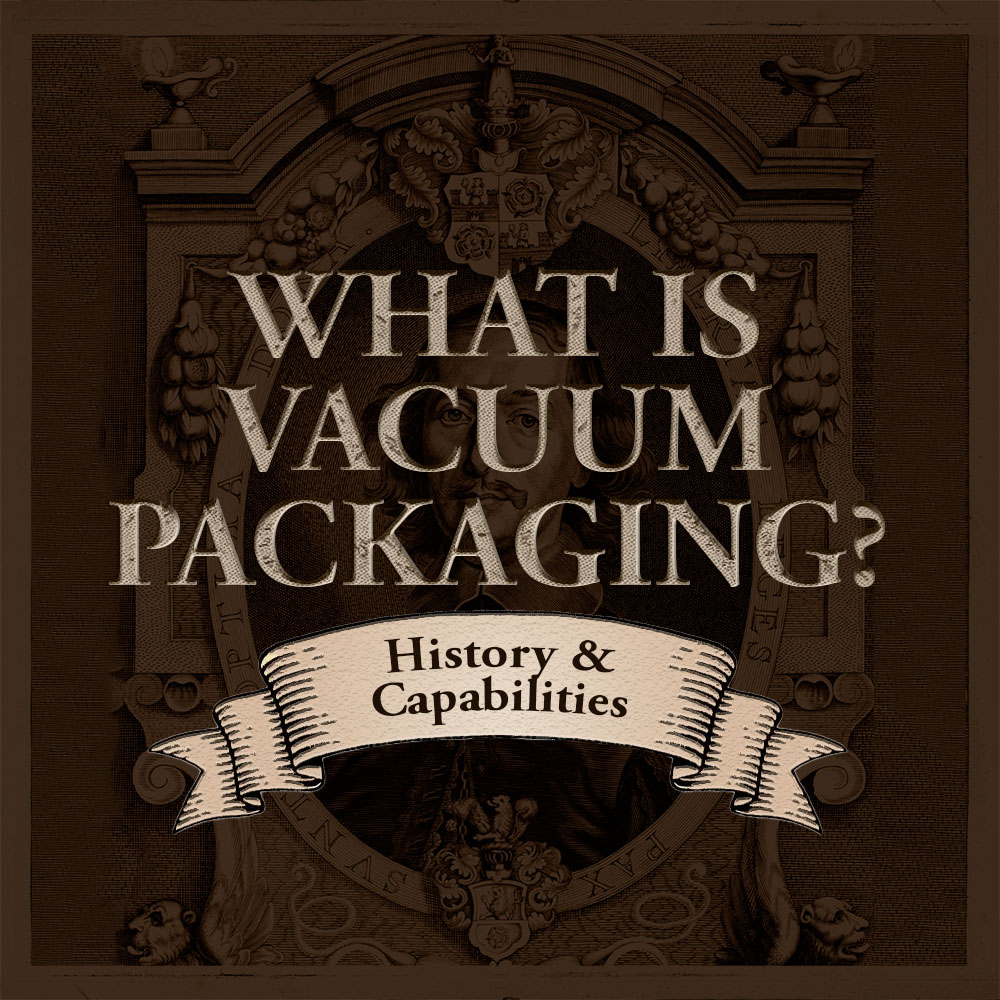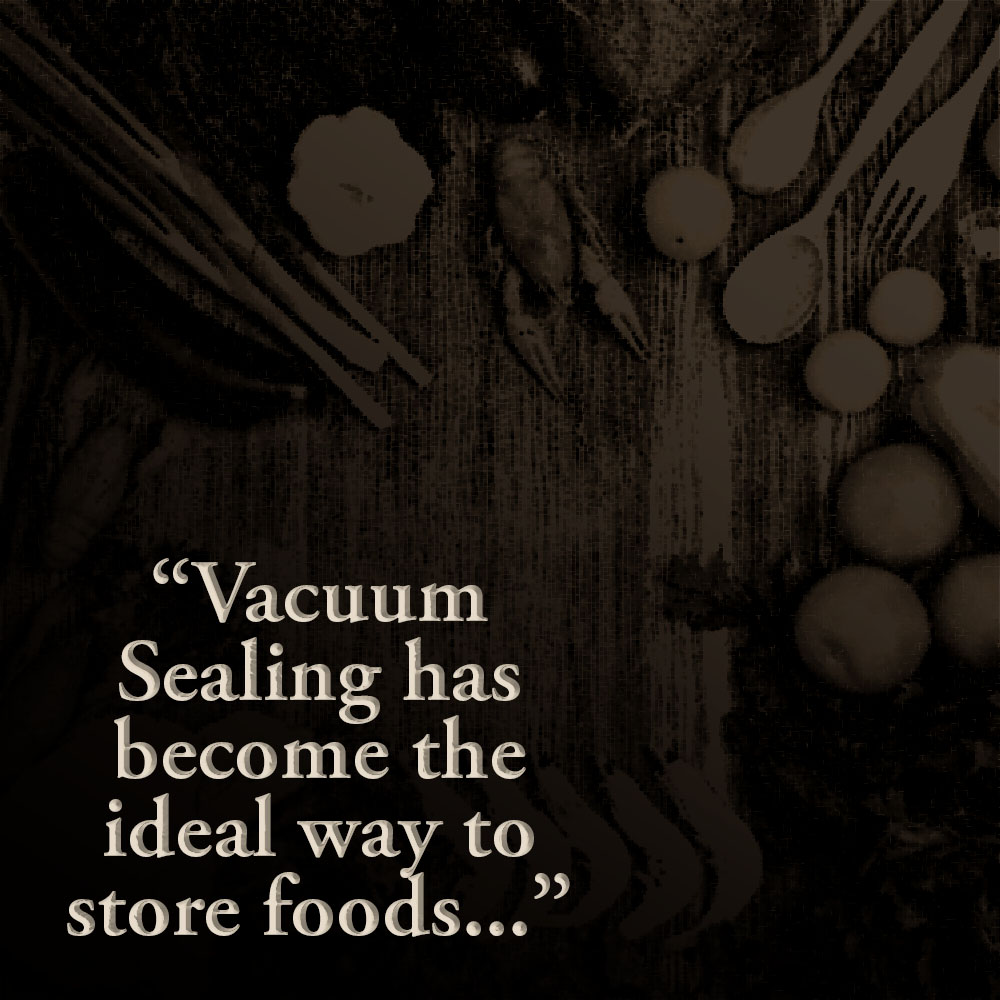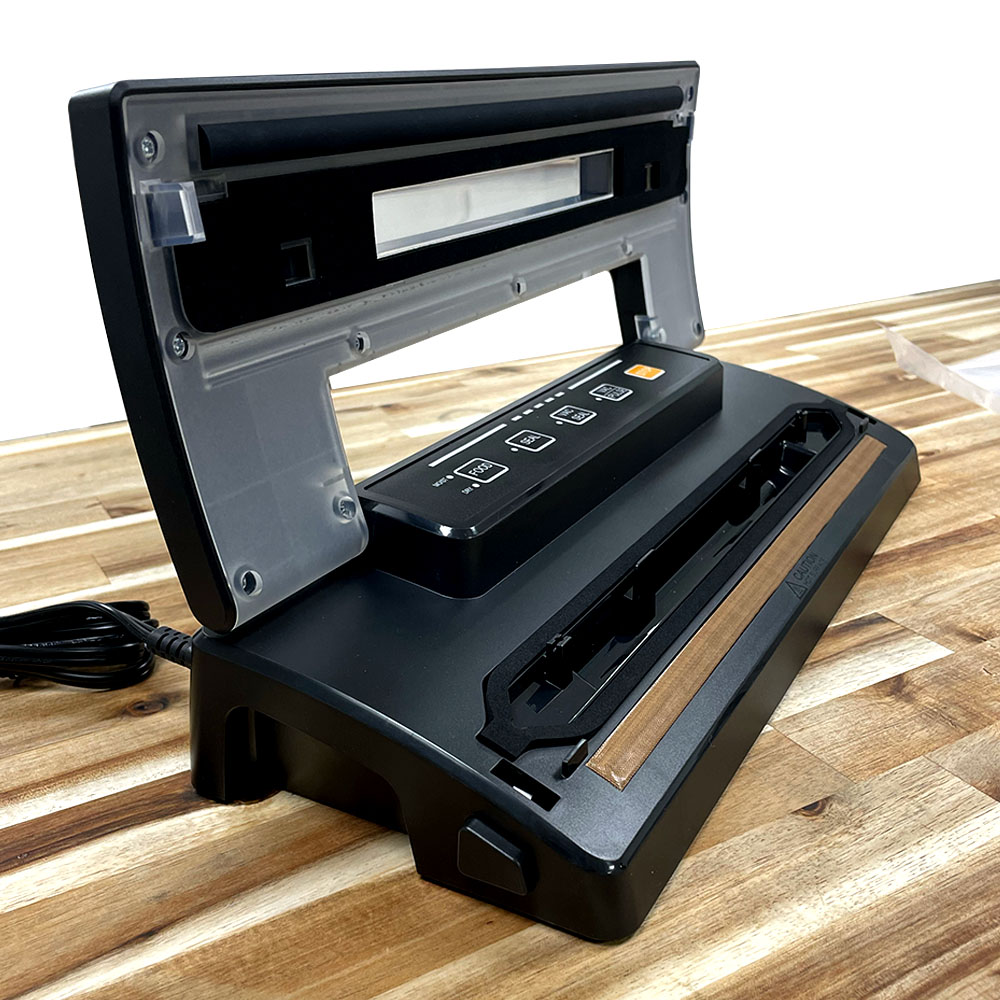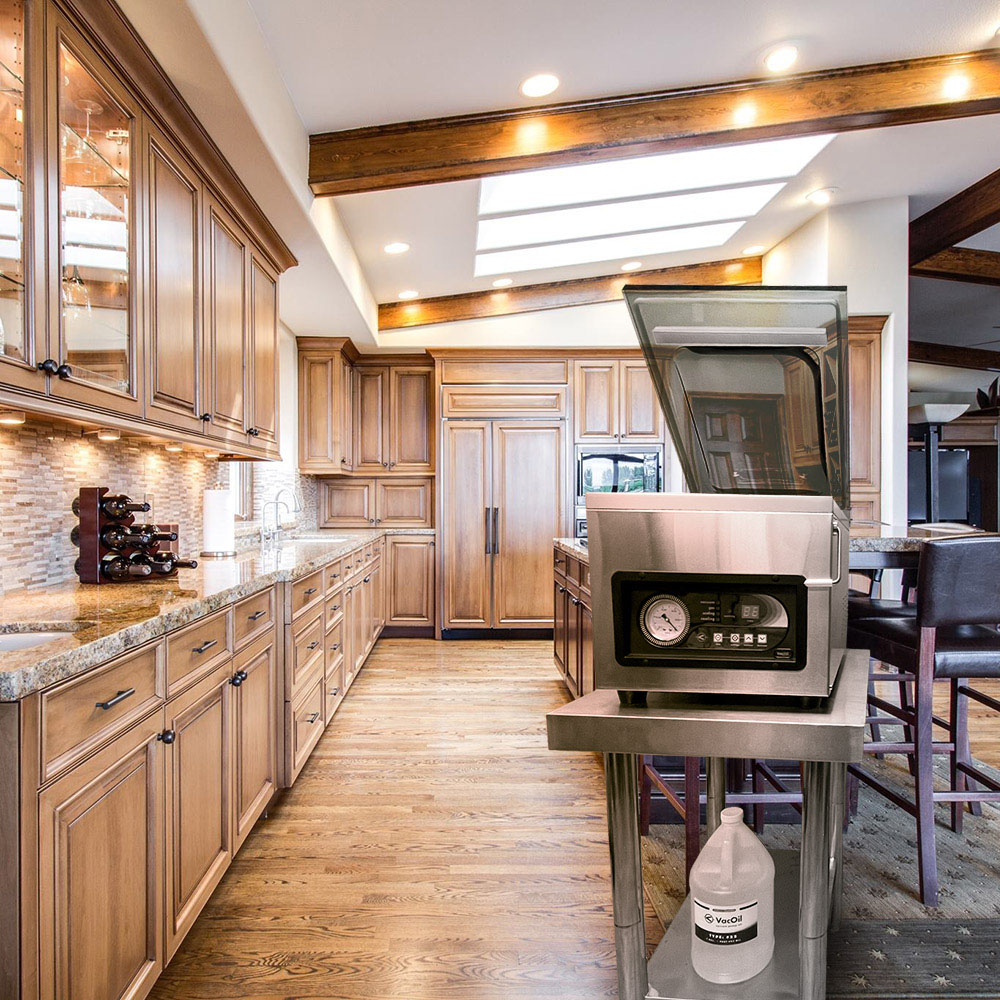What Is Vacuum Packaging?
“vacuum packaging with the right equipment is the most effective form of food preservation to date”
Have you ever wondered what exactly vacuum packaging is and what options are available to you in the industry? Well, you’ve come to the right place! Learn how vacuum packaging with the right equipment is the most effective form of food preservation to date so you can stock your shelves with foods that will not go to waste! Today, we will review some of the history of vacuum sealing, explain why it is effective, and provide an informative overview of your vacuum sealer machine and packaging options.

Index
History of Vacuum Packaging
Vacuum pumps date back to 1650 when a man named Otto Von Guericke presented an experiment demonstrating a vacuum to the dignitaries of the Holy Roman Empire. Two teams of horses were prompted to pull apart joined Magdeburg hemispheres that had the air pumped from between them – the hemispheres would not budge.
Then, during WWII, it was discovered that vacuum-packaging meat allowed it to be stored for much longer. So, from the basement of his own home in Germany, Dr. Karl Busch built the first vacuum pump specific for food packaging called a Huckepack.
Chamber vacuum packaging was introduced to the US with the help of John V Radziwon, founder of JVR Industries Inc! JVR Industries began in 1972, specializing in vacuum packaging.

Why Vacuum Packaging Items Is Effective
Vacuum sealing has become the ideal way to store foods at home and in the market, whether for shelf storage or freezing. The process consists of applying a vacuum to pull the air from between the oxygen-permeable packaging and a product and sealing the packaging to eliminate oxygen from reentering.
But why do many companies recommend vacuum sealing food over storing food in containers or other forms of storage?
The word “vacuum” originates from the Latin word “vacuus” meaning “empty space”. Vacuum packaging applies this concept to preserve food products, clothing, wine, and more! Contact with oxygen can cause aerobic bacteria to multiply and break down food particles. Essentially, the fewer oxygen molecules in the space surrounding a product, the less opportunity for food particles and aerobic bacteria on the product to react causing spoilage and, consequently, changing the odor, color, taste, and texture. Therefore, the more air is pulled from the packaging, the more lasting the shelf life.
This introduces the reality that one type of vacuum sealing machine will produce higher quality vacuum seal results than another due to a deeper vacuum pull.

Practical Benefits of Vacuum Sealing
1. Food Preservation – Eliminating oxygen solves the problem of spoilage from oxidization during food storage by not only fighting waste, but keeping taste, color, texture, and aroma at top quality!
2. Maintains Moisture and Flavor – Inhibits contact with a dry environment so the moisture within the product does not escape to compensate.
3. Prevents Freezer Burn – Click here to learn more about how to ensure meat and other food are not wasted from freezer burn by incorporating vacuum sealing.
4. Improves Flavor and Texture of Meat When Marinating – The vacuum opens the pores of the meat, while the close contact of the packaging ensures the marinade is in contact with even the meat crevices. These two simple benefits work in order to add to the flavor and texture of the meat.
Vacuum Sealer Options
The vacuum packaging industry supplies various machine options with different features. Consequently, choosing can be difficult when attempting to find what works best for your circumstances and goals. On the other hand, multiple options allow the opportunity to find the machine for you! Below will provide a brief overview of the differences between each including how each functions, benefits, and limitations.

Edge, Suction, External Type (Non-Chamber) Vacuum Sealers
How it Works: Place the food inside the bag then clamp the open end into the seal bar. These vacuum sealers apply the vacuum externally by pulling the air out of the bag and toward the pump. The seal bar then seals the bag once the air is pulled.
Benefits: Easy portability; No limit in the length of the bag, only in width depending on seal bar length; zero upkeep and maintenance due to the dry piston pump.
Limitations: Can not package liquids due to external application of the vacuum causing a siphoning effect; Contains a dry piston pump which creates problems of lower durability (1 month – 10 years) and less vacuum draw of 80%; Only use embossed vacuum seal bags.

Chamber Vacuum Sealers
How it Works: Set the food in the packaging, insert the open end of the bag into the seal bar clips, close the lid, and the vacuum cycle time begins automatically. You will observe a cold rapid boil when vacuum sealing liquids. This is your sign that the maximum vacuum has been applied. Skip the rest of the cycle and set a program with the vacuum time it took to reach a cold rapid boil. This allows for an efficient vacuum sealing process!
Oil vs Dry Piston Pump: These machines can contain dry piston pumps which have less vacuum draw of around 90% and are less durable. They can also contain oil pumps making increasing durability to 10-30 years, and a vacuum draw of up to 99.8%. Click here to learn more about how the pump type can impact your packaging results and overall experience!


Benefits: Seals food including liquids since the vacuum is applied evenly within the chamber negating the siphoning effect; stainless steel housing gives the machine durable protection; Increased pump durability, vacuum draw, and quieter if it contains an oil pump like our VacSeries units! The chamber sealer pouches are up to 7 times less expensive when compared to foodsaver style embossed bags for external units.
Limitations: Contain maximum pouch sizes depending on the model due to the chamber feature; Higher maintenance for oil pumps; May need a cart for larger models.
Nozzle Head Vacuum Sealers
How it Works: Similar to external by pulling air out of the bags externally. The difference is, that a nozzle protrudes into the pouch and pulls the air, then automatically retracts after the vacuum cycle time, sealing the bag to conclude.
Benefits: Easy portability; No limit on the length of the bag, only in width depending on the seal bar length; next to zero upkeep due to the dry piston pump.
Limitations: Can not package foods containing liquids due to siphoning effect; Contains a dry piston pump which results in lower quality packaging.Typically sold commercially at much higher price. Not suited for home-use typically.

Rollstock Thermoformers
How it Works: Uses heat to thermoform a roll of film into pockets. The person operating places food into those pockets. Non-forming film is placed as the top layer and heat is applied to create an airtight package. Each package is cleanly separated by crosscut and rotary knives to create professionally packaged results.
Benefits: Efficient; Takes little effort; Ensure consistency of packaging appeal. Initial investment might be costly, but savings could be tremendous.
Limitations: Size causes challenging portability; Expensive.
Packaging Types and Compatibility with Each Vacuum Sealer Type
Below info turned into an image with rows being each packaging option and columns titled “Packaging Options” “Machine Compatibility” “Description”. Will decrease word count.

JVR Industries Inc. supplies all packaging types listed in various size options. Contact us to write custom notes such as a packaged date on your bags!
Consider that more expensive VacFlex vacuum seal bags are designed only for an external, Foodsaver-type vacuum seal model which increases cost over time compared to vacuum pouches compatible with chamber vacuum sealers such as the VacSeries models. Click here to read about the differences between chamber pouches and vacuum sealer bags that cause this price variation.
Questions?
If you have further questions on which options may provide the best results for your vacuum sealing process, feel free to send us an email or call during our business hours. JVR Industries has been specializing in vacuum packaging for over 52 years and staff will be equipped and happy to provide you with further information!







